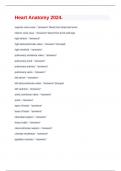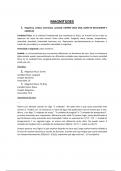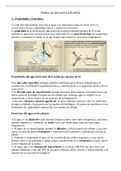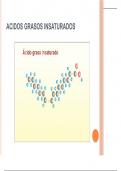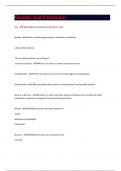Social Psychology II
I Evolutionary Psychology
Altruism and Natural selection
Darwin on the origin of species (survival and reproduction)
o Special bond between parents and their children.
o When children need help, they reach out for their parents. (saves
them from dangerous behavior)
o Demo extra: baby like women are more attractive
Altruistic behavior
= helping others although it may be detrimental to their own fitness.
Looking to the consequences for the group and less to the consequences of the
individual. (especially for next generation)
- INCLUSIVE FITNESS ( we care more about people with a larger genetical
overlap)
- Helping relatives in trouble is more common
- More child abuse by stepfathers (+/- 100x more than natural fathers)
Reciprocal altruism
= I’ll help you when you help me
- Needs an advanced brain that can recognize people and what they do and
have done/will do
- Deceivers can be punished
- Small groups
- Society protects social rules
Group selection
Selection of social characteristics occurs at the level of the group rather than the
individual.
- Chicken cattle
- The most cooperative tribes survived better then tribes who had less
cooperation
- We are tame because we live better in groups that way.
- Brain size in comparison with other animals => most social animals
- Social network etc. is located in the frontal anterior part of the brain. How
bigger this area, the less mental effort they needed to understand social
behavior of relatives
- Learned behavior
,Cooperation and competition
Sexual selection and Sex differences in behavior
Sexual selection and parental investment
= natural selection by different access to sexual partners
- Women invest in raising off-spring (women could win a lot with the right
male)
- Men invest only in their seed
Selection criteria: Sex differences
Primitive way of life that is still encoded in our DNA, based on chances of
survival
,Different preferences:
- Woman look for a partner who can provide material support
- Men look for a partner who is young and physically attractive
(Pedophilia: genetic tendencies to look for younger females. )
Common preferences :
- Physically attractive partner
- Waist-to-hip ratio: optimal .90 for men and .67-.80 for women
International studies in 33 countries show these results (suggests it is due to a
genetic/biological cause)
- Women long for a partner who provides financial perspectives: Highly
significant
- Women long for a partner who is ambitious and industrious: Significant
- Men long for a partner who is younger: Highly significant (average: 3y
younger)
- Men long for a partner who is physically attractive: Highly significant
- Men long for a partner who has little sexual contacts before their relation:
not very strong(ideas about infidelity changed in the last 40-60 years)
Cuckoldry and jealousy
Men are more concerned about sexual infidelity than women.
Women are more concerned about their male partner falling in love with another
woman.
, II The social Brain
Reading the body and mind
- Mirror system: “body reading”
- Mentalizing system “mind reading”
Mirror system for body reading
Non-verbal action understanding. We understand others by simulating/mirroring
their behavior in our own heads.
Social motion
- Biological motion recruits the (posterior Superior Temporal Sulcus) pSTS
of the Mirror Network (biological motion: hand, face, limbs,…)
o Evolutionary tendencies, surviving in dangerous situations. (ex.
Tiger)
Other mirror areas include aIPS and PMC:
Anterior Intraparietal Sulcus: Ties link between movement and the context (exp.
Taking a cup. (motions in a context)
PreMotor Cortex: Creating goals (exp. I’m thirsty, I want to drink) picking up a
cup in a specific way, we can understand this involves this kind of goal. (goal of
motion)
Advantages of Mirroring:
- Evolutionary continuity with other species and explicit neural mechanism
(e.g. mirror neurons)
Disadvantages of Mirroring:
- Observable behavior is a poor predictor of internal states, so perhaps
we’ve evolved something that goes beyond this.
I Evolutionary Psychology
Altruism and Natural selection
Darwin on the origin of species (survival and reproduction)
o Special bond between parents and their children.
o When children need help, they reach out for their parents. (saves
them from dangerous behavior)
o Demo extra: baby like women are more attractive
Altruistic behavior
= helping others although it may be detrimental to their own fitness.
Looking to the consequences for the group and less to the consequences of the
individual. (especially for next generation)
- INCLUSIVE FITNESS ( we care more about people with a larger genetical
overlap)
- Helping relatives in trouble is more common
- More child abuse by stepfathers (+/- 100x more than natural fathers)
Reciprocal altruism
= I’ll help you when you help me
- Needs an advanced brain that can recognize people and what they do and
have done/will do
- Deceivers can be punished
- Small groups
- Society protects social rules
Group selection
Selection of social characteristics occurs at the level of the group rather than the
individual.
- Chicken cattle
- The most cooperative tribes survived better then tribes who had less
cooperation
- We are tame because we live better in groups that way.
- Brain size in comparison with other animals => most social animals
- Social network etc. is located in the frontal anterior part of the brain. How
bigger this area, the less mental effort they needed to understand social
behavior of relatives
- Learned behavior
,Cooperation and competition
Sexual selection and Sex differences in behavior
Sexual selection and parental investment
= natural selection by different access to sexual partners
- Women invest in raising off-spring (women could win a lot with the right
male)
- Men invest only in their seed
Selection criteria: Sex differences
Primitive way of life that is still encoded in our DNA, based on chances of
survival
,Different preferences:
- Woman look for a partner who can provide material support
- Men look for a partner who is young and physically attractive
(Pedophilia: genetic tendencies to look for younger females. )
Common preferences :
- Physically attractive partner
- Waist-to-hip ratio: optimal .90 for men and .67-.80 for women
International studies in 33 countries show these results (suggests it is due to a
genetic/biological cause)
- Women long for a partner who provides financial perspectives: Highly
significant
- Women long for a partner who is ambitious and industrious: Significant
- Men long for a partner who is younger: Highly significant (average: 3y
younger)
- Men long for a partner who is physically attractive: Highly significant
- Men long for a partner who has little sexual contacts before their relation:
not very strong(ideas about infidelity changed in the last 40-60 years)
Cuckoldry and jealousy
Men are more concerned about sexual infidelity than women.
Women are more concerned about their male partner falling in love with another
woman.
, II The social Brain
Reading the body and mind
- Mirror system: “body reading”
- Mentalizing system “mind reading”
Mirror system for body reading
Non-verbal action understanding. We understand others by simulating/mirroring
their behavior in our own heads.
Social motion
- Biological motion recruits the (posterior Superior Temporal Sulcus) pSTS
of the Mirror Network (biological motion: hand, face, limbs,…)
o Evolutionary tendencies, surviving in dangerous situations. (ex.
Tiger)
Other mirror areas include aIPS and PMC:
Anterior Intraparietal Sulcus: Ties link between movement and the context (exp.
Taking a cup. (motions in a context)
PreMotor Cortex: Creating goals (exp. I’m thirsty, I want to drink) picking up a
cup in a specific way, we can understand this involves this kind of goal. (goal of
motion)
Advantages of Mirroring:
- Evolutionary continuity with other species and explicit neural mechanism
(e.g. mirror neurons)
Disadvantages of Mirroring:
- Observable behavior is a poor predictor of internal states, so perhaps
we’ve evolved something that goes beyond this.



